Most cases of uncomfortable pain in the lumbar region and spine are related to a disease such as osteonecrosis. It affects about 40% of men and women aged 30-40 years and about 90% of elderly people. Therefore, the earlier the disease is diagnosed, and the more thoroughly examined, the higher the probability of stopping the progression of osteonecrosis and staying active at an older age.
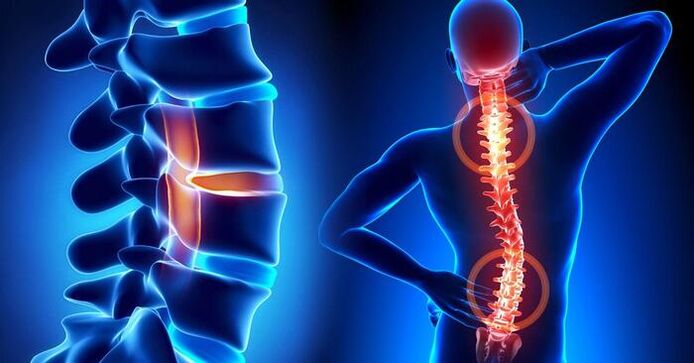
Definition of disease, causes of disease
So, what is osteonecrosis, where does it develop, what structures does it affect, what are the treatments? This disease affects the spine and the tissues between the vertebrae and is manifested by a violation of their shape, density, elasticity and sometimes even their integrity. As a result, the distance between the vertebrae is reduced, the spine gradually loses its stability, compresses the nerves, forms herniated masses, accompanied by back pain, discomfort when moving.
If we briefly describe the nature of osteonecrosis, then this is the gradual wear and tear of the tissues of the intervertebral disc (cartilage), which leads to instability of the spine. If left untreated, degeneration of ligaments and joints develops, bone tumors appear, posture is disturbed, movement is accompanied by pain.
Causes of osteonecrosis of the spine:
- an inactive lifestyle with a lack of muscle load;
- spinal cord injury;
- systematic intense stress on the spine;
- heredity;
- overweight;
- Hypothermia;
- hormonal and autoimmune diseases;
- toxic poisoning;
- congenital connective tissue failure;
- psychological reasons (stress, depression, etc. ).
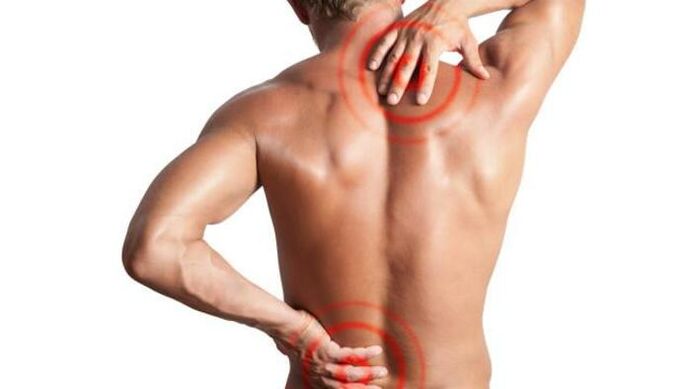
Symptoms of osteonecrosis
The disease is characterized by periods of remission and remission with varying degrees of severity of symptoms. The main symptoms of osteonecrosis of the spine, characteristic of the main types of diseases, lumbar, cervical and thoracic:
- pain localized in a specific region of the spine;
- pain syndrome of the reflected type associated with damage to nearby musculoskeletal tissues;
- myelopathy and radiculopathy due to compression of the nerve endings of the spinal cord and blood vessels.
Depending on which part of the spine is affected by the disease, the list of symptoms of osteonecrosis can vary. Specifically: the patient presents with tingling in the muscles, numbness in the limbs, other sensory disturbances, decreased strength in the arms and legs, headache and heart attack, low back pain.
Pathogenesis of osteonecrosis
Before the elastic fibrous nucleus of the disc begins to lose its elasticity and deform, several processes related to bone resorption take place in the human body:
- spasms, dystonia, inflammation;
- decreased blood circulation;
- damage to the processes of neurons.
Furthermore, cracks appear on the deformed annular, disc protrusion develops and forms a herniated mass. Often, these suggestive factors of spinal disease develop during childhood or adolescence and are often the result of poor posture, scoliosis, sports injuries, infectious diseases, or vascular disorders. natural.

Stages of osteonecrosis
There are three stages of development of osteonecrosis of the spinal cord:
- first, in which the disc begins to decrease in height, has a flattened shape, loses moisture, elasticity, may protrude;
- the latter develops in the absence of treatment and is manifested by a violation of the structure of the fibrous ring of the vertebral disc, the appearance of cracks and unstable growth in a certain area of theSpine;
- characterized by the breakdown of disc cartilage, the development of hernias, the formation of bone processes of osteoblasts.
Symptoms of the development of osteonecrosis of the spine become more intense from the first to the third stage.
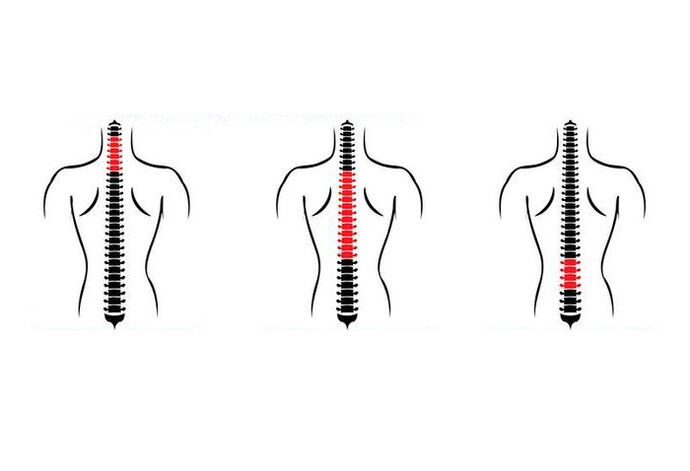
Classification of osteonecrosis
The classification of osteonecrosis is based on several markers, the main of which is the localization region. Distinguish:
- lumbar bone necrosis;
- osteonecrosis of the cervical spine;
- osteonecrosis of the thoracic spine.
Lumbar osteosarcoma is manifested by pain in the lower back that increases when turning, lifting weights. The pain can occur in the leg or both legs, and is characterized by aching pain. With a sharp syndrome, a hernia is suspected. With lumbar osteonecrosis, often occurs muscle spasms in the legs, peeling of the skin.
With the development of osteochondrosis in the cervical spine, vertebrae 1-7 are affected. The disease is accompanied by headache in the back of the neck, neck pain, collarbone, shoulder. There may be a crackling sound when turning the head, numbness of the upper extremities, feeling like there is a lump in the throat.
With bone tumors in the thoracic spine, patients worry about pain in the chest, shoulders, armpits, and heart. Perhaps a feeling of shortness of breath, the development of attacks of intercostal neuralgia.
Bone tumors in the lumbar spine are the most common, and the thoracic ones are the rarest.
Complications of osteonecrosis
If the patient thinks about the treatment of osteonecrosis too late, when the symptoms of the disease are already evident, the following complications may develop:
- disc herniation;
- spinal cord stroke;
- kyphosis;
- convexity;
- pulpitis;
- paralysis of the lower extremities.
In the absence of treatment, the patient begins to suffer from frequent exacerbations of this condition, which are characterized by increased pain, limited mobility, significant worsening of the general condition. The most terrible complication of spinal cord necrosis is disability. Therefore, in order to prevent such serious changes in the work of the musculoskeletal system, it is necessary to timely and high-quality treatment of osteonecrosis.
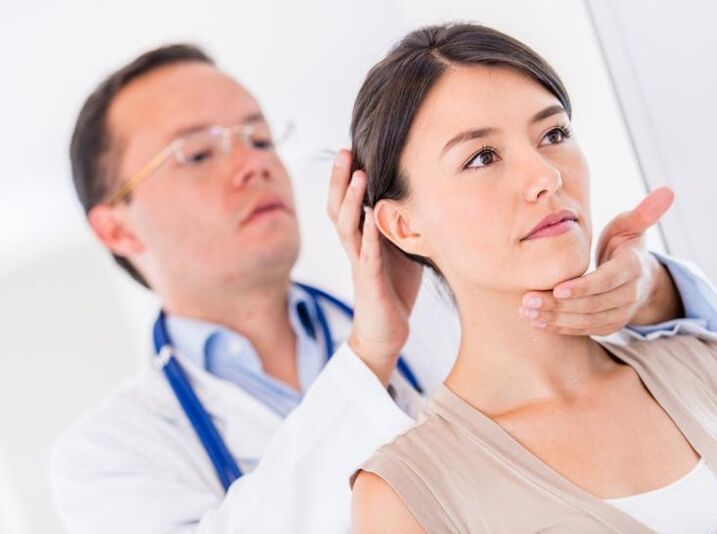
Diagnosis of osteonecrosis
Such a disease as osteonecrosis is mainly pain in the spine. But it's important to distinguish it from pain caused by problems other than degenerative disc disease. To do this, doctors conduct a step-by-step diagnosis, which includes:
- Prehistory shooting, implies a conversation between the therapist and the patient to determine the exact area of the pain site, the factors that cause the condition to worsen. It is important to know the patient's occupation, the period when the problem with the spine started, when the exacerbation occurred, what kind of pain in the lower back and other areas, the patient's treatment method used. which value.
- Physiological examinationallows you to determine the proportions of the body, the quality of the movements and actions performed, the condition of the skin, the degree of sensitivity to pain. The doctor, by palpation, determines the condition of the muscle tissue, the presence of sealing, edema, etc. v.
- Double plane spine X-rayfor visual assessment of disease status. Allows you to determine the displacement of the vertebrae, the presence of osteoclasts, salt deposition.
If the data collected to prescribe treatment is not enough, or a serious disease of the spine is suspected, the patient is indicated for CT and magnetic resonance imaging, whereby detailed examination of the vertebrae can be performed. , circuit, soft. tissues, neurological processes, and create a complete picture of the state of the spine affected by osteolysis to determine the treatment strategy.
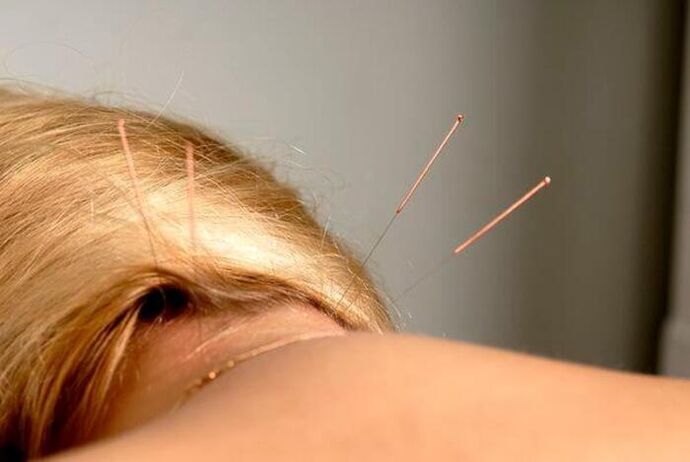
Treatment of osteonecrosis
Like any disease, osteonecrosis requires determining the cause of its development. Reducing the severity of symptoms is not key, but is an important phase of treatment, the outcome of which depends on a number of factors. In some cases it is a complete cure, in other cases it is a prevention of complications and disability.
In the treatment of osteonecrosis of the spine, a group of measures is used:
- change the patient's regimen of the day;
- prescribe medication to relieve symptoms;
- physiotherapeutic procedures (massage, acupuncture, electrophoresis, exercise therapy, etc. ).
Changing the daily regimen in the treatment of osteochondrosis involves reducing the intensity of physical activity, bed rest with severe pain, and excluding sharp bends and bends.
Drugs to treat osteonecrosis of the spine
They can be divided into several groups:
- muscle relaxants for pain, including tablets, anesthetic injections, and anti-inflammatory injections for osteonecrosis. Homeopathic preparations normalize the function of the thyroid gland, improve the lymphatic drainage system, have anti-inflammatory, detoxifying and immunomodulatory effects.
- non-steroidal anti-inflammatory drugs. When used in patients with osteoarthritis, reduces progression of inflammatory and destructive changes in joints, improves integrity, thickness, and other characteristics of cartilage, and stimulates bone tissue repair. .
- anti-inflammatory topical ointments and alternative transdermal patches. These drugs have analgesic, analgesic, antipyretic, and anti-inflammatory effects. The mechanism of action is to reduce the production of inflammatory mediators, lower body temperature and reduce pain.
- chondroprotectors;
- anti-inflammatory drugs to relieve pain;
- Group B vitamins.
Complementary treatments
Among the additional funds that can be used to treat, alleviate the general condition and improve the function of the spine and discs, the most effective were shown:
- Acupuncture;
- acupuncture therapy;
- professional massage and self-massage;
- physical education courses;
- manual therapy.
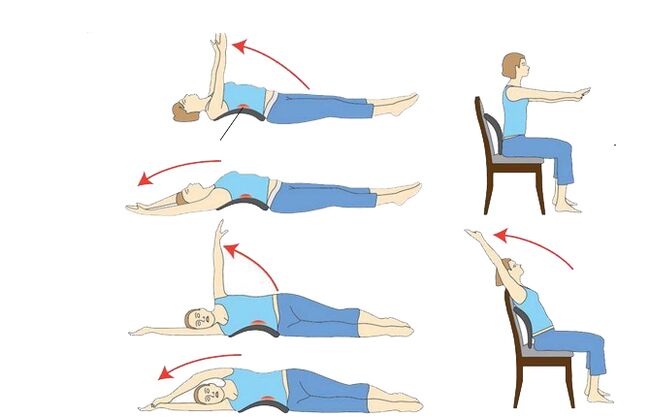
Prediction, prevention
If the spine disease is not ignored, progresses without serious complications, in 1. 5-2 months of competent treatment, the condition of the disease can be significantly improved and the process can be stopped. transition to a chronic form. In difficult cases, doctors recommend surgical treatment.
Prevention of osteonecrosis of the spinal cord includes:
- compliance with the correct daily regimen, change in body position and moderate physical activity;
- frequent visits to the pool;
- body weight control;
- wear comfortable shoes;
- balancing diet;
- sleeping on pillows and orthopedic mattresses;
- take nutritional deficiencies or preventive homeopathic medicines to increase immunity, improve overall health and eliminate dystonia.
It is necessary to have an annual physical examination and consult a doctor for treatment as soon as any pain occurs in the spine.
It doesn't matter what type of osteoporosis we are talking about - lumbar, cervical or thoracic, taking care of your own health should become a good habit, especially for the entire base. musculoskeletal system - spine.





































